
![]()
Every Sunday, we bring together a collection of easy-reading articles from analytical to how-to to photo features in no particular order that did not make our regular daily coverage. Enjoy!
Photo Dumps Are Now in Museums – Elle
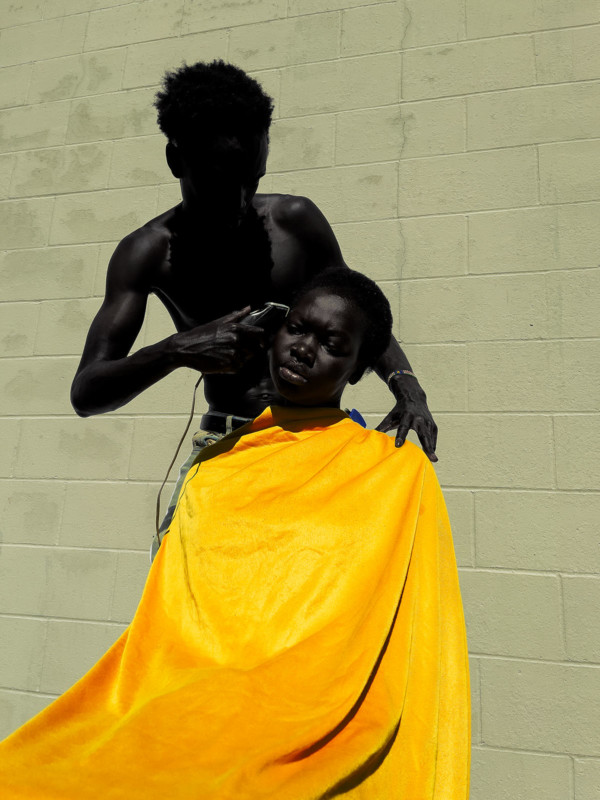
A new photo exhibit called INWARD: Reflections on Interiority at the International Center of Photography (ICP) in New York City features work shot entirely on an iPhone. Open through next January, it gives the spotlight to five emerging Black artists.
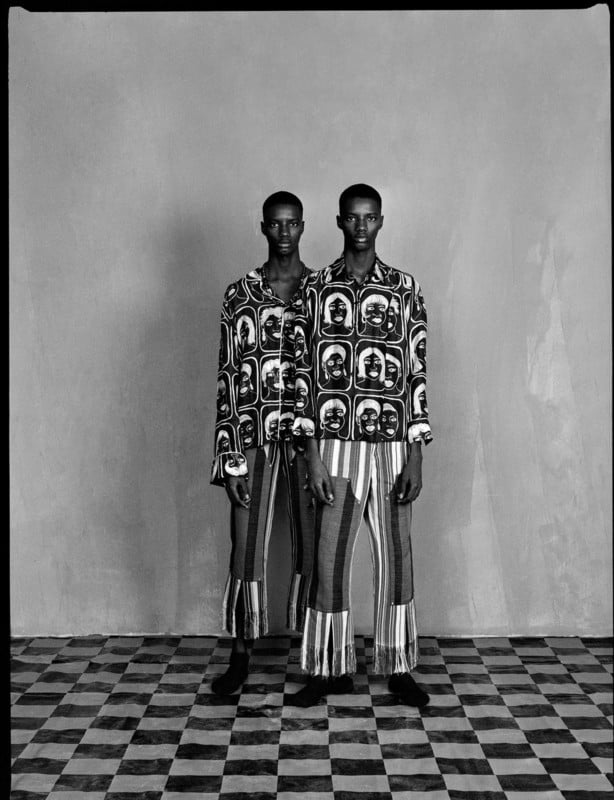
Curator Isolde Brielmaier notes that Apple is redefining its work, specifically regarding the iPhone 12 Pro Max and its camera capabilities.
“The richness of darker skin tones comes through in a much more dynamic way,” Breilmaier explains to Elle.

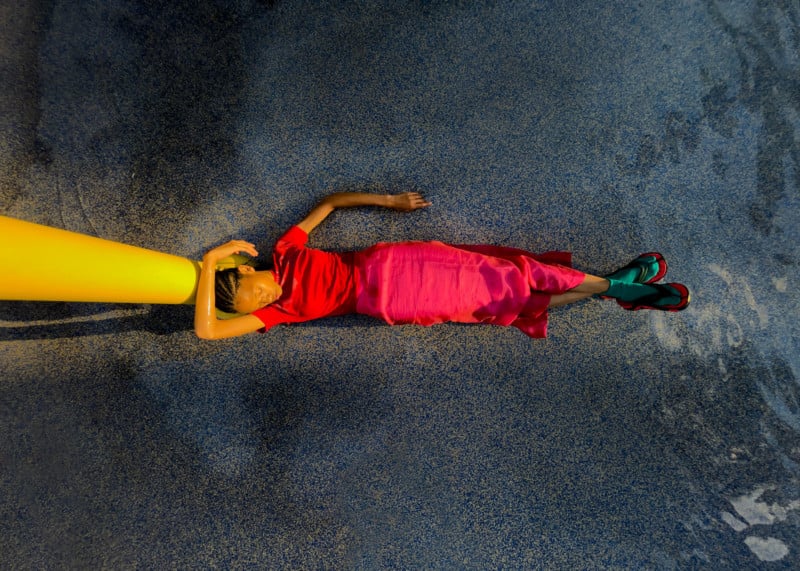
Breilmaier is likewise awestruck that a tech tool can also produce personal images. “I think my favorite part of curating this exhibit is to see how compelling the viewpoints of these artists are. They’re using the same phone that I use, that you use, but what they see is completely unique,” she says. “So, through their Photo folder, we can see their world. Which informs how we see our world.”
How an F-15 Pilot’s Life Was Saved by a Photographer – Air & Space

Last July 13, Ian Simpson was in a favorite spot just outside the fence at RAF Lakenheath, north of London, England, home to the US Air Force 48th Fighter Wing taking photos of planes taking off.
As US Air Force pilot Major Grant Thompson took off in his F-15E, Simpson noticed a shower of sparks coming from the aircraft’s rear. As the fighter continued to climb, Simpson Googled the base, called the switchboard, and reached flight operations. “I said, ‘Look, something is wrong with the plane, definitely. We’ve got lots of photographs of sparks coming out the back’,” Simpson, 56, told the Associated Press.
Also, on CNN
The First Picture Taken on a Leica – Kosmo Foto

Stephen Dowling, founder & editor of Kosmo Foto, writes:
At the turn of the century, many cameras – Kodak’s lightweight Brownie excepted – were bulky, heavy and difficult to carry. Oskar Barnack, a skilled mechanic who worked in the microscope department of Ernst Leitz in Wetzlar, was an enthusiastic amateur photographer who often took cameras with him on his travels.It’s believed that Barnack began thinking about a camera small enough to take anywhere as early as 1905. At Ernst Leitz, he was involved in the production of the company’s first cine camera. Cinema films used a much smaller film format than stills cameras of the time, making them much lighter and easier to carry. Cine film’s size – 18 x 24mm compared to large plates used in many still cameras – was Barnack’s springboard for developing the world’s first 35mm camera.
… Between 1913 and 1914, Barnack perfected the design of a camera that, a decade later, would enter the market as the first Leica camera. Instead of the film being transported vertically, as it was in a cinema camera, Barnack’s prototype camera transported the film horizontally…He called this camera the Ur-Leica.
Via DPreview

A True Story About Bogus Photos of People Making Fake News — WIRED
From WIRED:
The photographic elite gathered in Perpignan, France, on September 1 at the annual Visa Pour L’Image photojournalism festival. That night, the outdoor screen shimmered with images of people using laptops in Soviet-era apartments and a bear strolling past rundown industrial sites. They came from The Book of Veles by Jonas Bendiksen, an award-winning documentary photographer. He had traveled to North Macedonia, which had been home to a vibrant fake news industry during the 2016 US election. As his peers gazed at his work, Bendiksen watched from the bleachers with increasing discomfort…In fact, Bendiksen had created the people in the images with software. The next day, the prestigious cooperative Magnum Photo posted an interview in which Bendiksen revealed that although he had traveled to Veles, every person and bear in his images were digitally faked using 3D models like those used to make video games…
“It’s scary that the most visually sophisticated people on the planet fell for this,” Bendiksen told WIRED. “Where’s the threshold for fooling people who are not so visually literate?”
San Francisco Photography Legend Robert Altman Dead at 77 – SFgate
Robert Altman, the legendary San Francisco photojournalist who focused his lens on the city’s counterculture in the 1960s and 1970s, died on Sept. 24.
Altman, who was born in NYC, trained under Ansel Adams before moving to San Francisco in 1968, where he quickly became a fixture in the city’s counterculture scene, befriending — and sometimes photographing — artists, musicians and hippies with ease. He was Rolling Stone’s chief staff photographer.
The ‘Gift of Pictures’: Praemium Imperiale Laureate Sebastião Salgado on his Photography – JapanForward
This year’s laureate in painting is artist and photographer Sebastião Salgado (Brazil/France), recognized by the Japan Arts Association for his powerful works that “put a spotlight on the dispossessed and exploited, the beauty of nature, and the fragility of the world and its inhabitants.”
To make a photo, you need to have an authorization ‒ not a written authorization, nothing signed, but a tacit authorization. It should not be you taking photos; it should be the person in front of you who gives you the photo as a gift. – Sebastiao Salgado to JapanForward
Lion Roaring as Fly Buzzes into his Eye Wins Africa Geographic Photographer of the Year 2021—The Sun

An amazing photograph of a lion roaring as a fly buzzes in his eye has won the Africa Geographic Photographer of the Year 2021.
The stunning entry was selected from 25,023 photographs that celebrated the African continent.
“With one snap of the shutter, this image succeeds with so many of the criteria that make an excellent photograph,” commented the judges. “It is technically brilliant from the perspective of timing, anticipation, and setting the camera perfectly for the predicted behavior. Then, as with so many great wildlife shots, luck played a huge part as the fly just happened into the frame at the right time.”

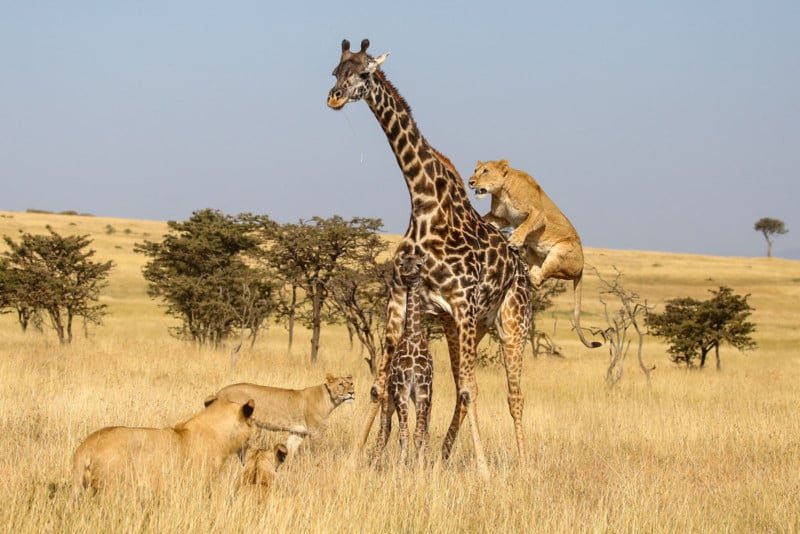
Discover Daguerreotype Photography and How the Pioneering Process Is Still Used Today — MyModernMet
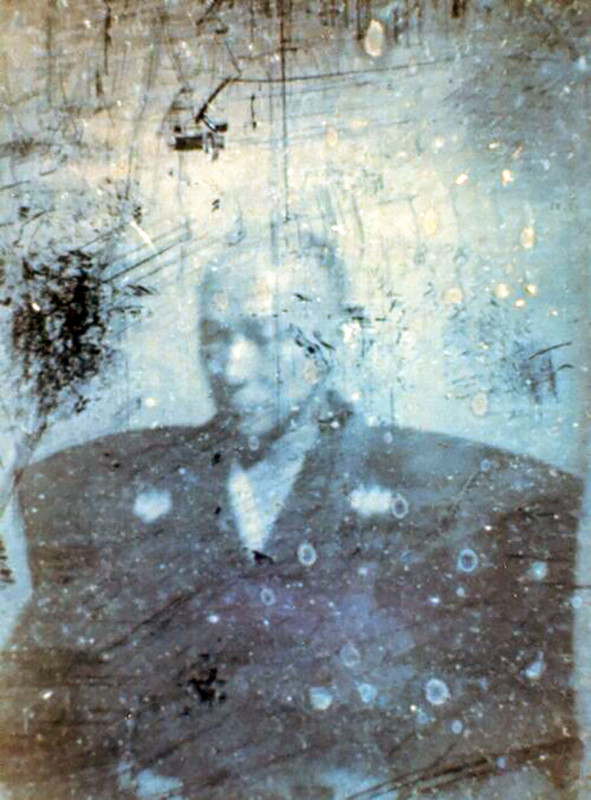
My Modern Met writes:
American artist Chuck Close worked with Jerry Spagnoli to take a series of daguerreotype images of fellow artists, poets, film stars, and other creatives. Close converted the old metal plates into super-sharp, large digital prints by scanning the daguerreotype in high resolution. Merging old and new techniques, the experimental artist found a rather dangerous way to capture the famous faces in beautiful detail. “A normal daguerreotype is a more than two-minute exposure,” he says. “We’ve made it instant photography by having a billion foot-candles of light go off all at once, and that’s very painful. The flashes are so intense your eyes slam shut. It’s like having an ice pick shoved in your eyeball.”
Where and How to Photograph the Aurora — Space
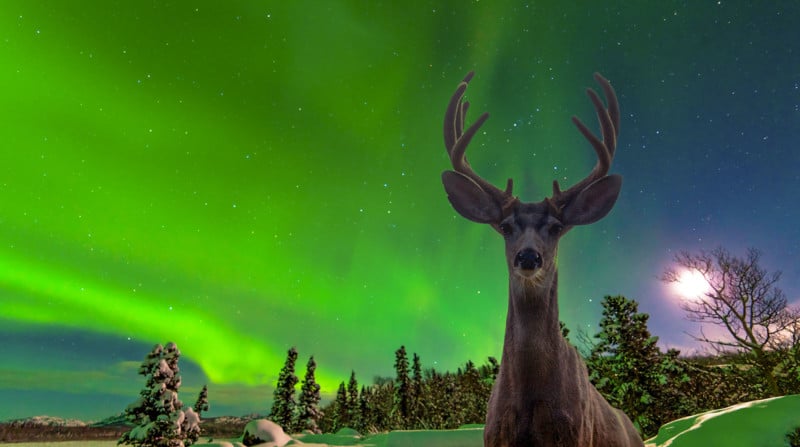
Here is a guide to capturing the elusive Northern Lights or aurora borealis which is certainly there on every adventure and outdoor photographers’ bucket list.
On an active night, the aurora can be thousands of miles long, so you can capture it in Iceland, Norway, Finnish Lapland, Alberta (Canada), or Alaska. You can also capture it in New Zealand, where you can get the Southern Lights or the aurora australis.
‘I Want my photographs to Convey the Reality’ – Lynsey Addario – PhotojournalismNews
I am trying to capture the reality of a given scene or situation and trying to say whatever the subject is trying to say. My images are just a vehicle for the subject or story.– Lynsey Addario to Photojournalism News.
Read also:
A Chat with War Photographer Lynsey Addario
War Photographer Lynsey Addario Shares the Photos That Impacted Her the Most
Helen Levitt: the Most Celebrated, Least Known Photographer of her Time – The Guardian
From The Guardian:
The American poet and cultural critic David Levi Strauss memorably described Helen Levitt as “maybe the most celebrated and least known photographer of her time.” That was in 1997 when Levitt was 84 and the subject of a retrospective at The International Center of Photography in New York, the city in which she was born and made most of her work. Just over two decades on and 12 years after her death, aged 95, in 2009, one could argue that little has changed in terms of her enigmatic status.
Local Wedding Photographer Sues NYS Over Right to Deny Service for Same-Sex Marriage Ceremonies – WENYnews
WENY News
Five Photographers Share Why They Use Creative Commons Licenses – Flickr

Creative Commons is celebrating its 20th anniversary this year, and they have since the beginning been offering an alternative to full copyright under Creative Commons licenses.
These licenses give everyone from individual creators to large institutions a standardized way to grant the public permission to use their creative work under copyright law.
Photographers, artists, and other creators on Flickr have contributed hundreds of millions of photos, enabling others to use their work in Wikipedia articles, news items, and more.
Does this Photo Show a Meteor Falling into a Volcano? — Snopes
“This is a genuine photograph of a meteor streaking above a volcano. While the angle of this photograph makes it appear as if the meteor was falling ‘into’ the volcano, that likely isn’t the case,” explains Snopes.
The claim is miscaptioned as the stated destination of this meteor was likely off by a few miles.
Indonesian photographer Gunarto Song’s photo above was a four-second exposure as the meteor descended above the volcano. The meteor was a round light, but the long exposure created a streaking effect.
Harlem Street Named After White Photographer Art Kane of Famed Picture Gets Community Pushback — Yahoo
Still one of my fave photos. A Great Day in Harlem – 57 of the coolest jazz cats, photographed by Art Kane, 1958 pic.twitter.com/nwr2qJA8tI
— Eric Alper 🎧 (@ThatEricAlper) March 26, 2017
A 1958 photo of legendary jazz musicians, called A Great Day in Harlem, was shot by photographer Art Kane on August 12, 1958, while he was on assignment for Esquire and quickly became famous.
Last month, the city renamed this iconic block between Madison and Fifth Avenues, calling it Art Kane Harlem 1958.
Now residents are objecting to a street being named after the man who took the iconic pic.
Great Read from the Past — 2017
Monkey Selfie Photographer David Slater Says He’s Broke: ‘I’m Thinking of Dog Walking’ – The Guardian
Read Also Photographer Wins Monkey Selfie Copyright Case, Court Slams PETA
Photos of the Week
The Story of Two Men on Different Sides Whose Paths Unwittingly Crossed 80 years Ago
Quiz of the Week
1.) Canon EOS R3 and Sony a9 II use what’s called Stacked CMOS technology for their 24 megapixel sensors. This means:
a.) Certain pixels are stacked one on top of the other for better light gathering
b.) There are high-speed ram chips wired directly to the rear of the sensor
c.) Multiple colored filters are stacked on top of each pixel
2.) Who opened the first photographic studio in the US?
3.) The new iPhone 13 Pro offers Macro. Is there a third-party software solution to shooting in macro mode for owners of older iPhones?
Answers
1.) b. These ram chips allow for high-speed readout rates.
2.) Samuel Morse, the inventor of the telegraph. Daguerre gave Morse a copy of his photographic instructions in the summer of 1839 before Morse returned to America after a visit to France. Morse hadn’t sold his telegraph yet, so he supported himself by opening the first photography studio in the United States and teaching others photography.
3.) Yes, all iPhones (from the iPhone 8 and on) can shoot macro with the Halide app — no accessories required.
Why I Like This Photo – Patrick Smith
I like this photo because it is one of a kind from Super Bowl LV. No other photographer has the same image, a rare feat for a major sporting event where photographers were stacked next to one another.
What elevates the image even more is that it’s of what many consider one of the greatest of our lifetime, Tom Brady. Not only did he win another Super Bowl, but after being with the Patriots his entire career, he proved that being traded and his age wouldn’t stand in his way of winning another ring.
For this image of Tom Brady, having an angle with a clean background was first and foremost important. Second, it was hoping to get a reflection of his face. There is so much happening on the field of play during any sporting event, but especially at the Super Bowl and celebration following the game. Family, friends, players can get in the way of zeroing in on the moment.
This was shot on a Canon 1DX Mark III on a Canon EF 200-400mm f/4L IS USM Extender 1.4x at 560mm (with the converter down) at 1/1600, 5.6 at 6400 ISO.
This was shot as Tom Brady of the Tampa Bay Buccaneers celebrated with the Lombardi Trophy after defeating the Kansas City Chiefs in Super Bowl LV at Raymond James Stadium on February 07, 2021, in Tampa, Florida.
Due to the pandemic, photographers did not have field access like we normally would at prior Super Bowls. This was something we had become accustomed to when sporting events began to make their return a few months prior. This, however, made working the entire game difficult navigating only the first row of seating, finding creative ways to tell a story from this one position.
By the time the game had ended, it felt like a weight was lifted. As the celebration started, I saw the reflection in the trophy and tried to work it a few times. Sometimes you just know if you were able to get the shot, and that was the case here. It was after Brady passed on the trophy, I was able to confirm on the back of the camera that I did and then transmit it to our remote editing team at Getty so they could get it out for the world to see on our site in under a minute.
We usually cover the Super Bowl with a massive team of photographers and editors on-site, but this game had to be covered with only three photographers and a couple of technical and editorial support. Therefore, strategy in our movements became much more of a thought process and very deliberate to make sure we covered every aspect of the game, celebrations, fans, etc. At the end of the day, it was a huge success for our Getty team, and this is just one image that shows that.
Patrick Smith is a staff photographer with Getty Images based in Baltimore, MD, documenting news, sports, and feature stories locally and internationally. Smith has been recognized notably by The Pulitzer Prizes, Pictures of the Year International, The Atlanta Photojournalism Seminar, Pro Football Hall of Fame, Society of Professional Journalists, National Motorsports Press Association, and The National Press Photographers Association.
Quote of the Week – Mitch Epstein

Documentary work is commonly associated with objectivity. I am not objective.* – Mitch Epstein
*My photographs have been drawn from the real world since my beginnings in the late ՚60s although I’ve never thought of myself as a documentarian. Documentary work is commonly associated with objectivity. I am not objective. My photographs function like poetry, a distillation of my real-life experience compressed into the flattened frame of a still photograph. DocumentJournal.com
Mitch Epstein (b. 1952) is a photographer who helped pioneer fine-art color photography in the 1970s. Epstein’s fifteen books include Property Rights (Steidl, fall 2021), In India (Steidl, fall 2021), Sunshine Hotel (Steidl/PPP Editions, fall 2019); Rocks and Clouds (Steidl 2017); New York Arbor (Steidl 2013); Berlin (Steidl/The American Academy in Berlin 2011); American Power (Steidl 2009); Mitch Epstein: Work (Steidl 2006); Recreation: American Photographs 1973-1988 (Steidl 2005); and Family Business (Steidl 2003), winner of the 2004 Kraszna-Krausz Photography Book Award.
To see an archive of past issues of Great Reads in Photography, click here.
We welcome comments as well as suggestions. As we cannot possibly cover each and every source, if you see something interesting in your reading or local newspaper anywhere in the world, kindly forward the link to us here. ALL messages will be personally acknowledged.
About the author: Phil Mistry is a photographer and teacher based in Atlanta, GA. He started one of the first digital camera classes in New York City at The International Center of Photography in the 90s. He was the director and teacher for Sony/Popular Photography magazine’s Digital Days Workshops. You can reach him via email here.
Image credits: All photographs as credited and used with permission from the photographers or agencies. Portions of header photo via Depositphotos.

